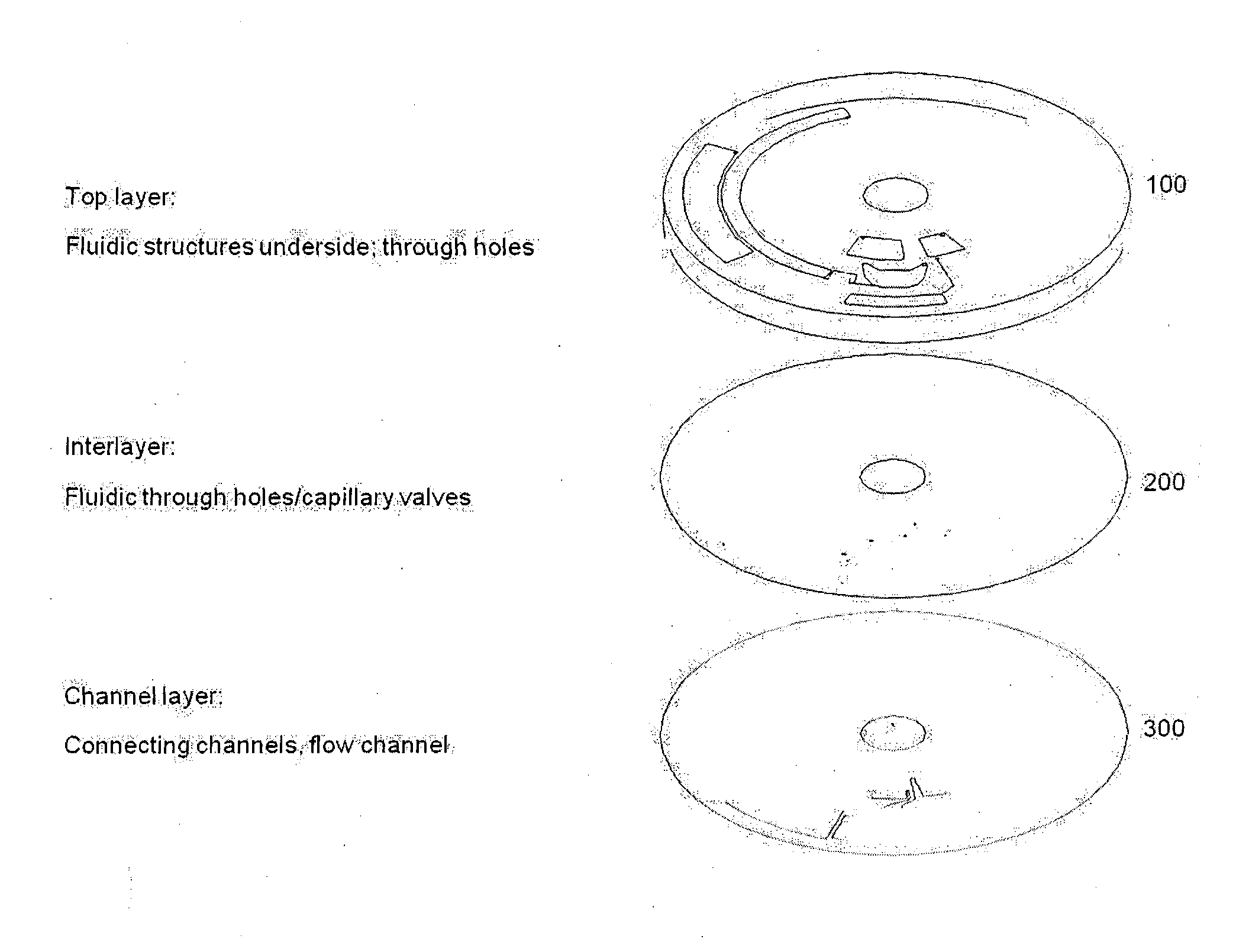Microfluidic Disc For Use In With Bead-Based Immunoassays
a technology of microfluidic discs and immunoassays, applied in the field of microfluidic discs and apparatus, can solve the problems of large manual or robotic sample processing, high cost of manual processing, and easy errors, and achieve the effects of cost-prohibitive in many applications, and cost-prohibitive in automation
- Summary
- Abstract
- Description
- Claims
- Application Information
AI Technical Summary
Benefits of technology
Problems solved by technology
Method used
Image
Examples
embodiments
[0173]Many forms of immunoassay for a centrifugal format with flowing beads as the detection step can be implemented incorporating the invention. For example in one embodiment:[0174]1. Mix 50 uL functionalized beads (6000 beads) with 50 uL of sample and 50 uL labeling reagent (phycoerythrin, PE) (VS=150 uL)[0175]2. Incubate 3 hours[0176]3. Add 1000 uL wash buffer (VW)[0177]4. Centrifuge to pellet beads[0178]5. Discard supernatant[0179]6. Resuspend in 300 uL of buffer (VE)[0180]7. Perform flow cytometry
[0181]Fundamentally, bead washing is removal of excess of unincorporated dye (PE) to a level where it does not interfere with detection of bead fluorescence (i.e., the background is low relative to the bead fluorescence).
[0182]Embodiments of Washing
[0183]Preferred embodiments of washing include:[0184]Pellet+decant+dilute: Centrifugation to pellet beads; remove (decant) supernatant, leaving behind a residual amount of solution; and resuspension of beads in buffer to achieve sufficient r...
examples
[0300]A possible construction of microfluidic discs according to the invention is shown in FIG. 15. This microfluidic disc consists of three main components: A fluidic layer 100 which contains the majority of fluidic structures such as reservoirs, channels, passive valves, and reagents in the form of liquid reagents or dried reagents; a thin interlayer 200 containing primarily through holes; and a lower or channel layer 300. Communication between 100 and 300 is via the through holes in 200. Such a construction is useful when making three-dimensional architectures requiring liquid ‘crossovers’, in which channels must pass over one another.
[0301]It is recognized that this construction is in no way limiting. Microfluidic discs may be formed by sealing a fluidic layer with an essentially featureless layer or thin film, without additional channels or through holes. In one construction there is provided a featureless sealing film and a disc.
[0302]Immunoassay and Clinical Chemistry Device
[...
PUM
 Login to View More
Login to View More Abstract
Description
Claims
Application Information
 Login to View More
Login to View More - R&D
- Intellectual Property
- Life Sciences
- Materials
- Tech Scout
- Unparalleled Data Quality
- Higher Quality Content
- 60% Fewer Hallucinations
Browse by: Latest US Patents, China's latest patents, Technical Efficacy Thesaurus, Application Domain, Technology Topic, Popular Technical Reports.
© 2025 PatSnap. All rights reserved.Legal|Privacy policy|Modern Slavery Act Transparency Statement|Sitemap|About US| Contact US: help@patsnap.com



